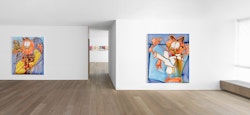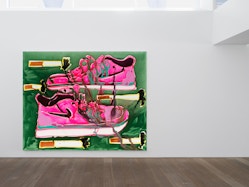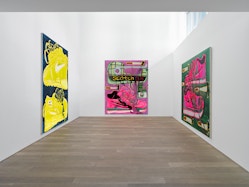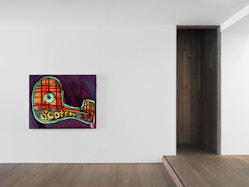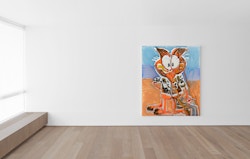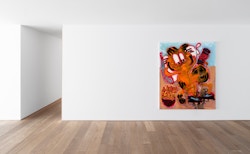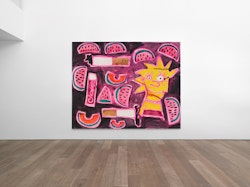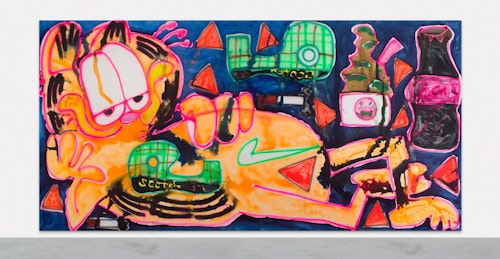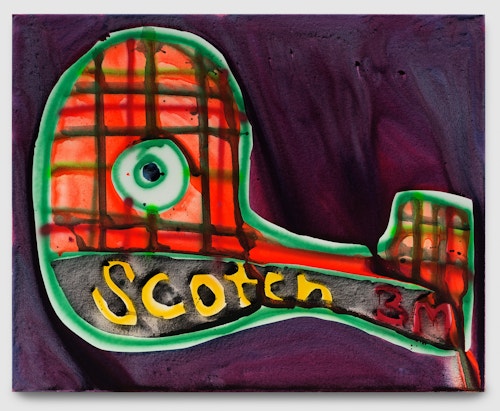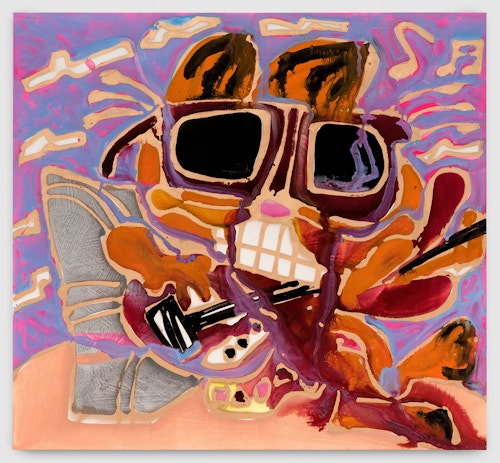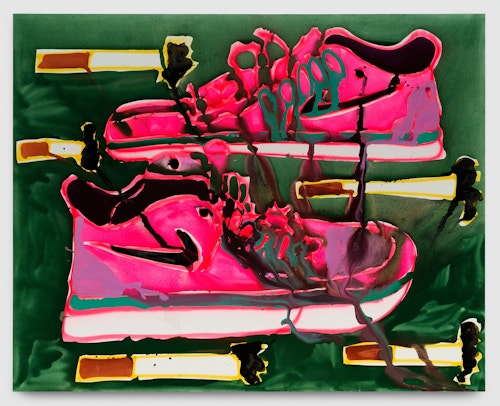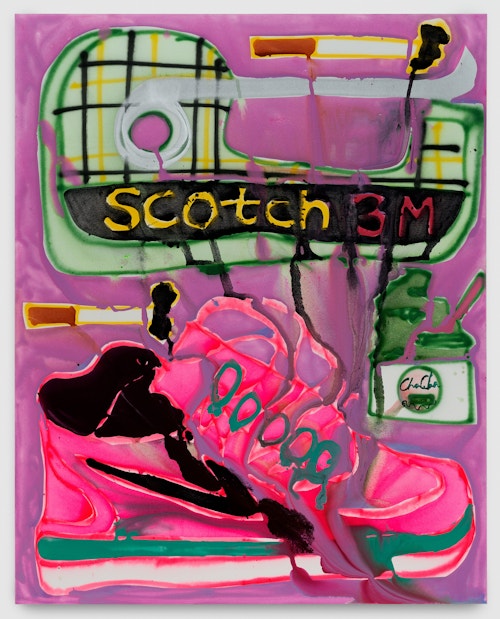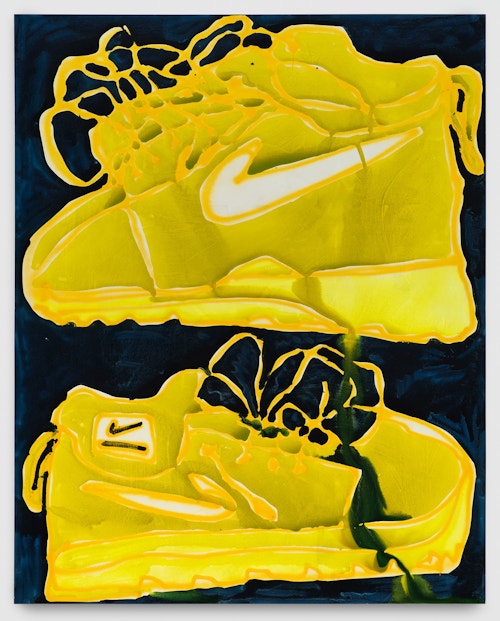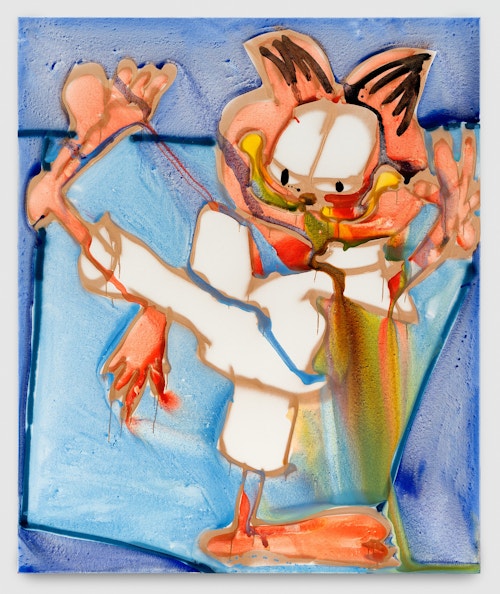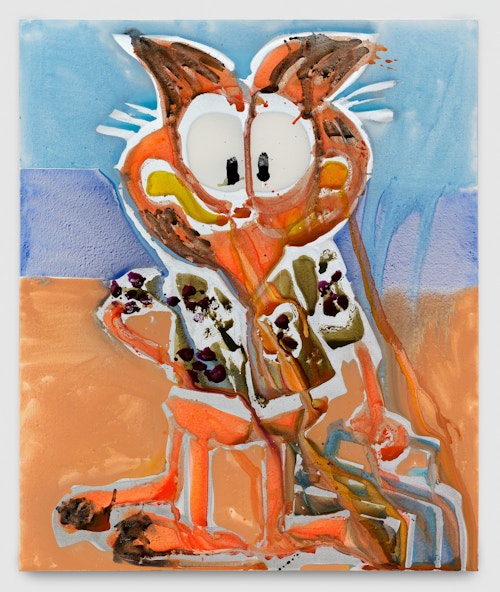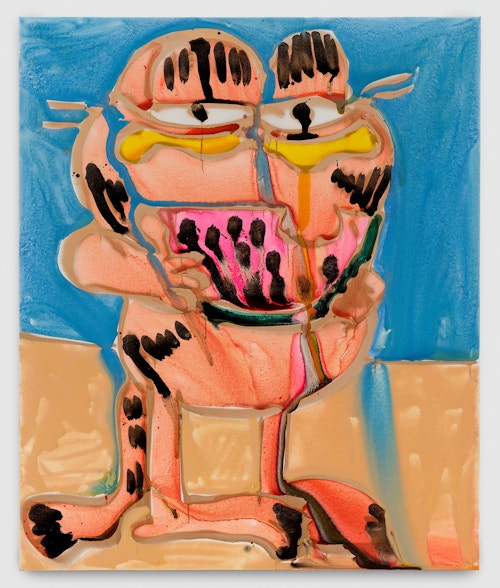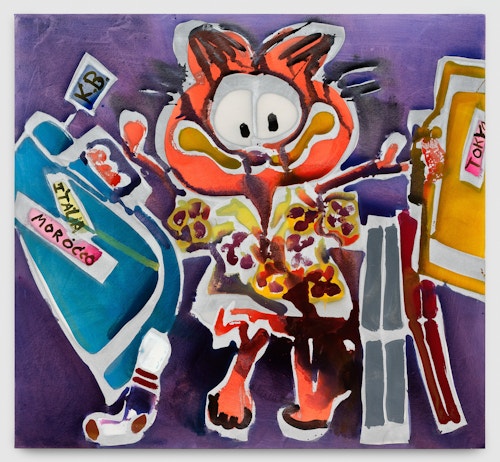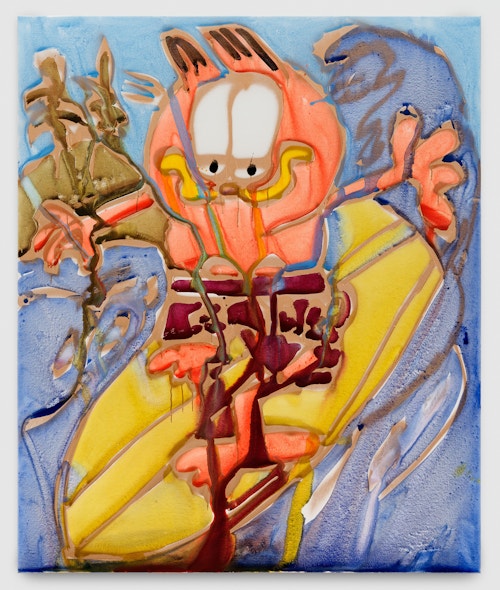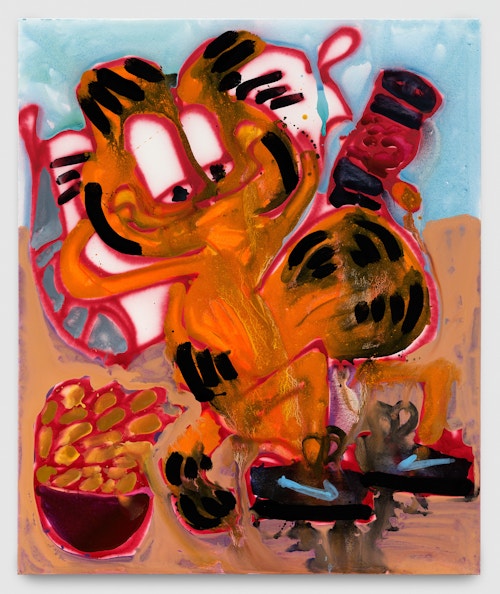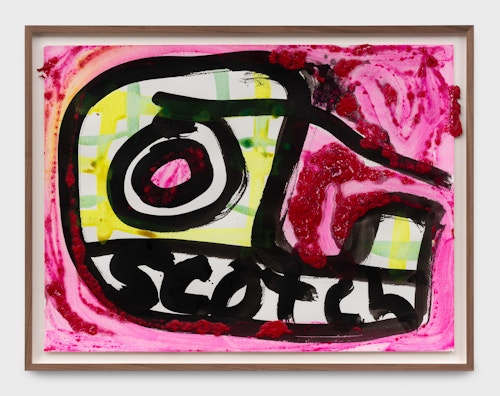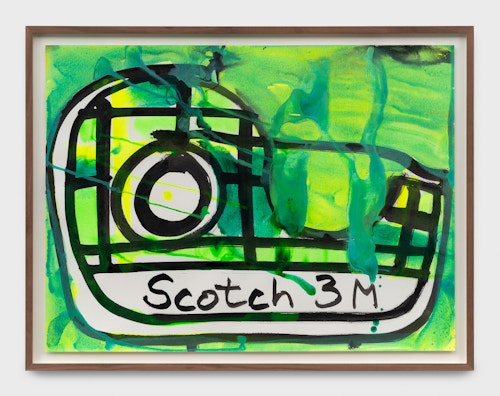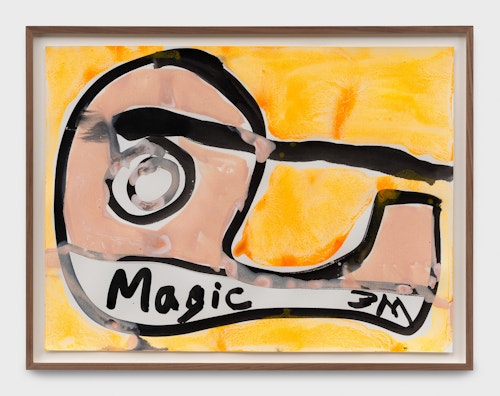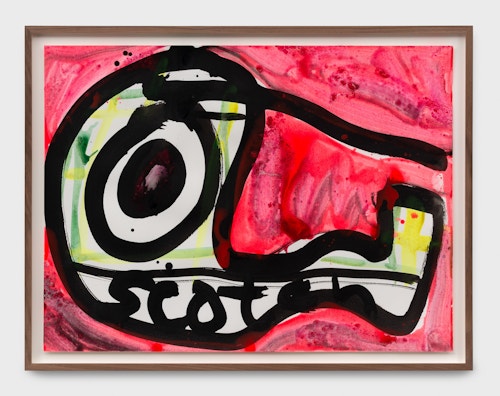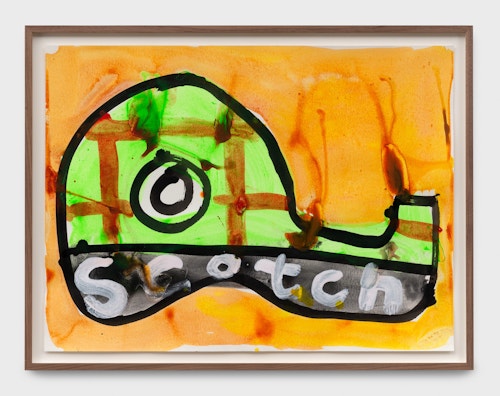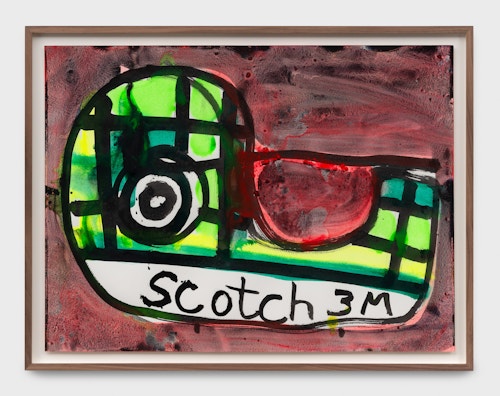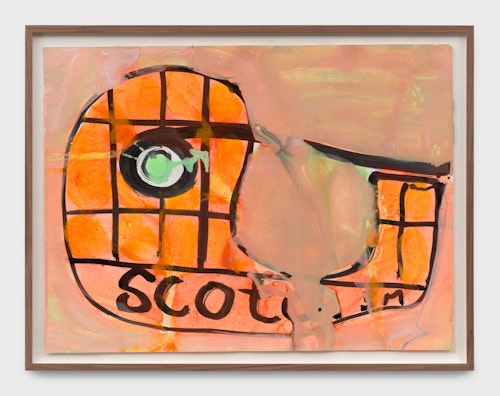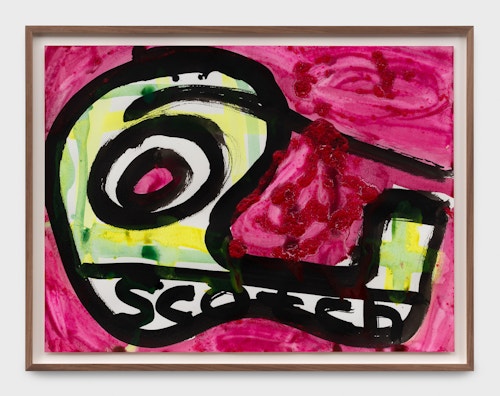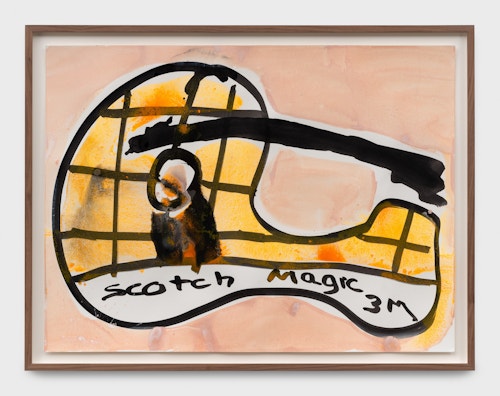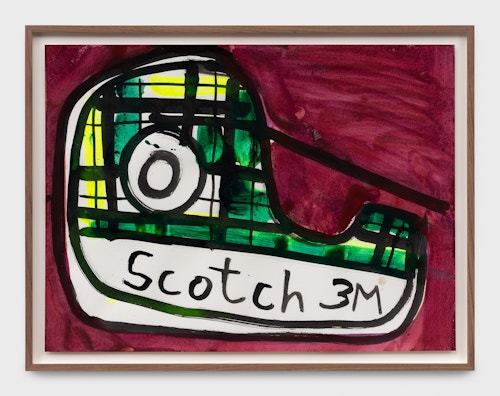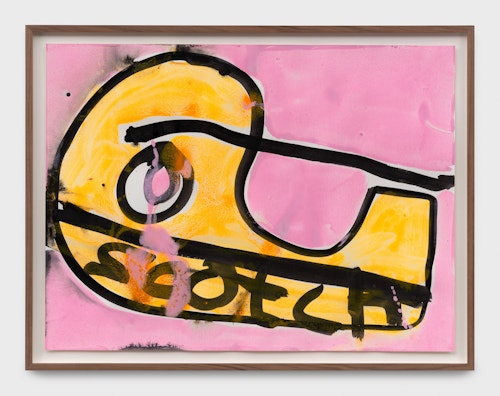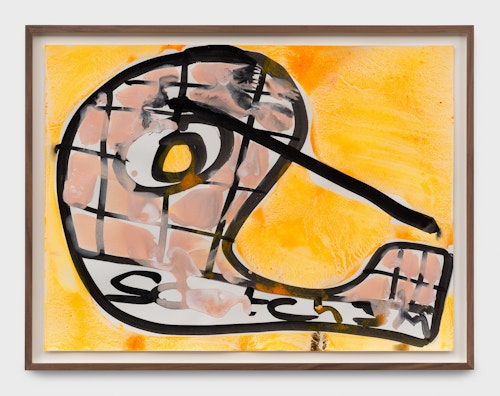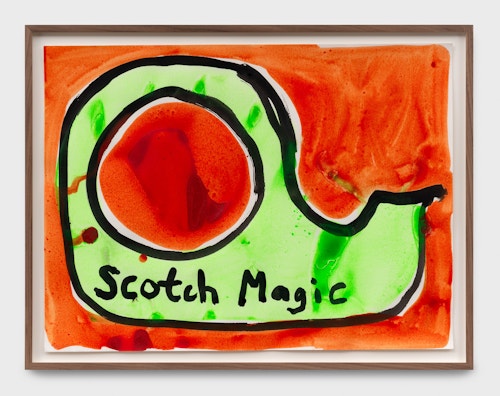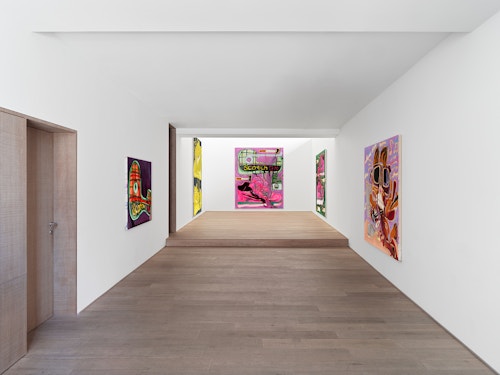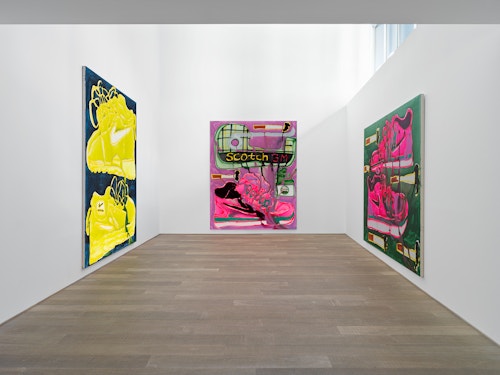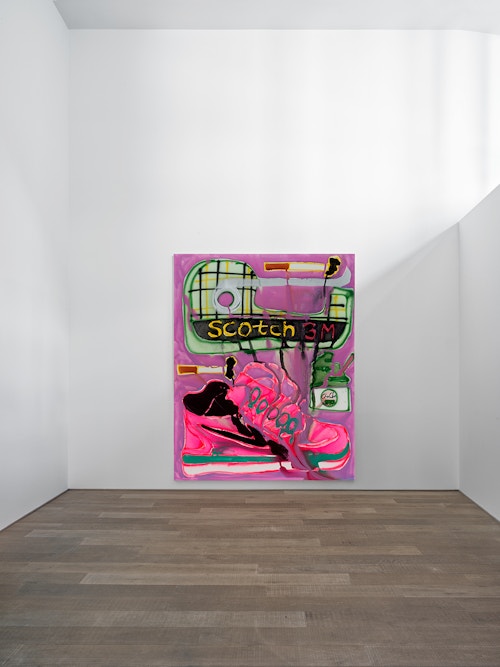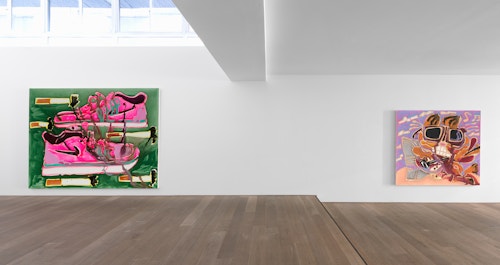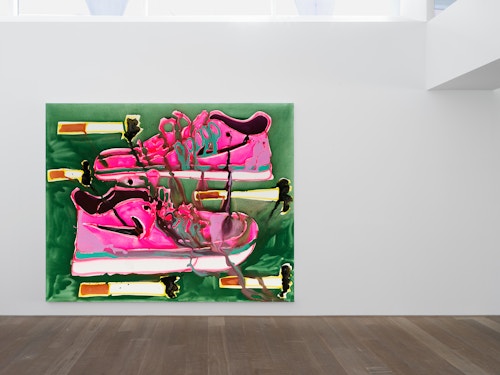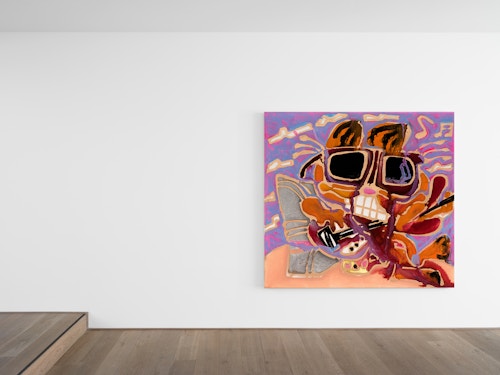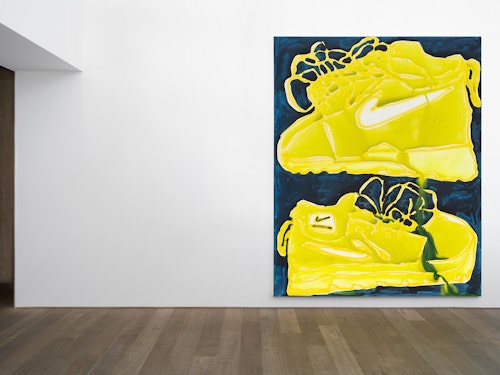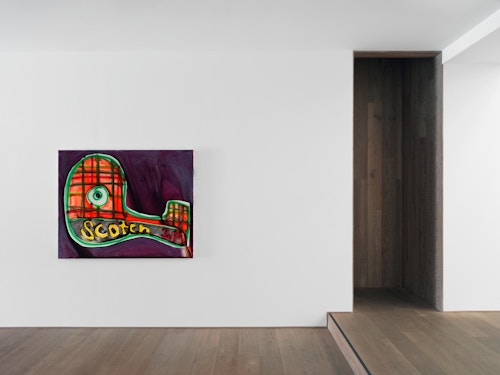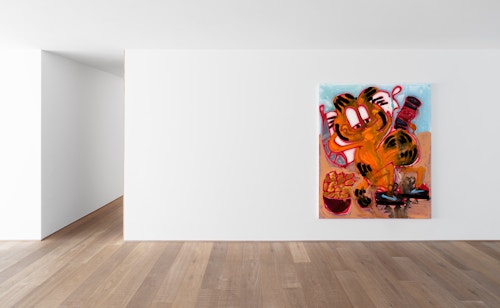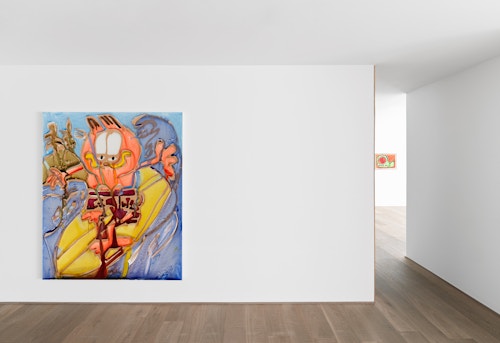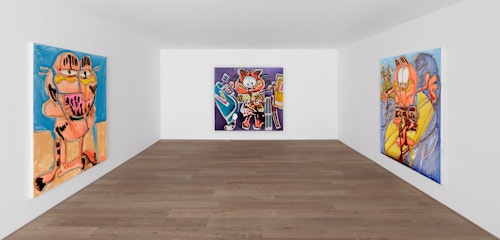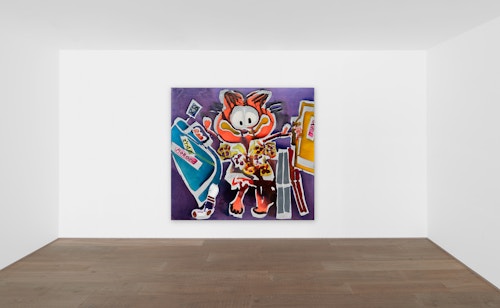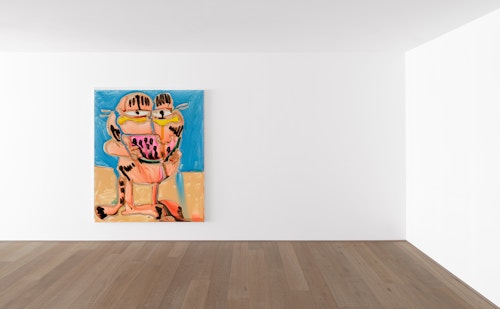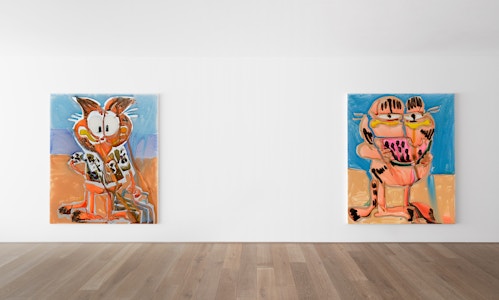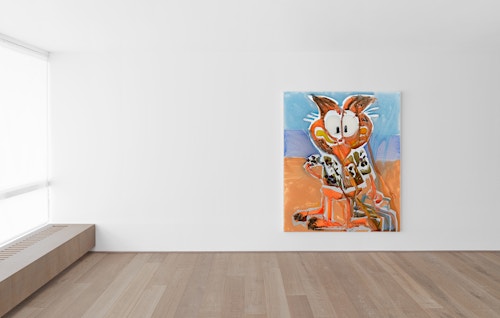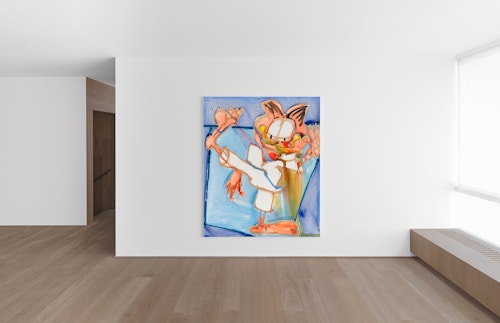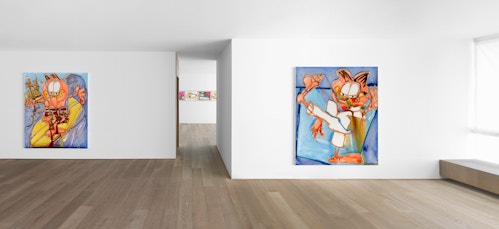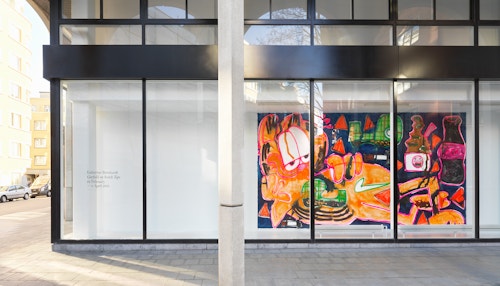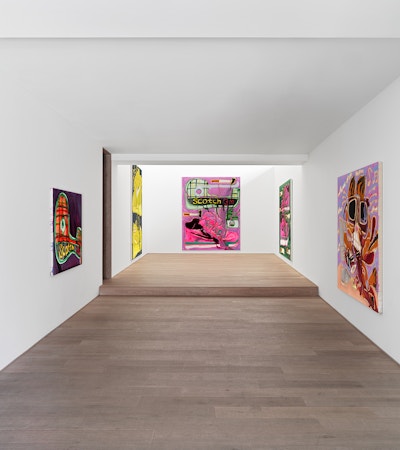
Katherine Bernhardt Garfield on Scotch Tape
Xavier Hufkens is pleased to announce the second exhibition by Katherine Bernhardt at the gallery.
Visiting Bernhardt’s exhibition is an immersive experience: a kaleidoscopic universe of electric colours that run like stain paintings and which can depict cartoon characters as well as a host of recognizable consumer goods. At the heart of the presentation is the monumental 3x6 metre canvas ‘pattern painting’ entitled Garfield + Scotch Tape + Matcha + Coca Cola + Doritos + Nike (2018), while many other works depict large colourful Nike shoes and various other elements of 21st-century New York street culture and the global world of Instagram.

Bernhardt dips in and out of history with ease: Scotch Tape has been an office staple since 1930, while the Pink Panther burst onto screens in 1964, just as Nike went into production. Garfield is an icon of the late 1970s and early 80s. She often paints certain objects and icons because of their intriguing colours and forms — mixing up different eras — and creating collage-like memories of our collective visual pasts. Other motifs, such as toucans and tropical fruits, allude to natural beauty and the environment while offering both unusual shapes for study and an opportunity to experiment with a wide spectrum of colours. Bernhardt revisits ‘larger than life’ products, and thanks to her choice of hot colour schemes, they often appear more alive now than ever before.
Bernhardt combines these motifs into spontaneous and visually arresting compositions that radiate joie de vivre. Yet for all the familiar objects or the reminiscing about cartoons, their messages are ambiguous and always open to interpretation. In this sense, they are akin to codified visual riddles. In some cases, Bernhardt conflates the lovable (a chubby Garfield cat) with the detestable (cigarettes and junk food). In another example, she uses Nikes as a contemporary reference to freedom of speech and racial justice (through quarterback Colin Kaepernick’s protests at NFL games, which led to him starring in Nike advertising campaigns, and the link to #BLM, the Black Lives Matter movement, which originated in Bernhardt’s hometown, St. Louis, Missouri). At the same time, she isolates the shoes as inanimate objects, thereby proposing them as new subject matter for the traditional genre of still life painting. The Nikes can also represent an open, direct representation of NYC as they are all people see on the subway, day in and day out, together with metro cards. Nikes and other such icons blend together literally thanks to the running paints, the fluidity of which also attest to influences such as Morris Louis, the famous stain painter. Likewise, some might read the image of Scotch Tape and cigarettes as a pun on the seductive but hazardous combination of whisky and cigarettes—while Bernhardt might respond that the lines simply intersected well with each other and ‘worked’. But perhaps the most replete image of them all is the monumental Garfield + Scotch Tape + Matcha + Coca Cola + Doritos + Nike (2018), in which the cartoon cat seems to have feasted on the best and worst of all delectable treats. Is it any coincidence that his engorged stomach is also etched with the Nike logo (something that Bernhardt has also ‘branded’ upon herself)?
The origins of Bernhardt’s energetic ‘pattern paintings’ can be traced back to her affinity with Morocco and specifically to an interest in Berber rugs. They are packed with miscellaneous symbols from the lives of Berber women who have woven them on hand-made looms across the Atlas Mountains since Palaeolithic times. Dutch wax fabrics based on African prints are another source of inspiration. Derived from African designs yet produced in the Netherlands since the 19th century, the cloth was originally shipped back into Africa but is now also widely produced in local West African mills. Like the Berber rugs, the African textiles are embellished with all-over patterns depicting allegories of everyday life: political figures, local landscapes, and religious themes. More popularly produced fabrics now include prints of lipsticks, electric fans, and gaming consoles. Fascinated by the designs of the carpets and of the wax fabrics, which can be ‘read’ like paintings, Bernhardt chooses a repertoire of such items for her own canvases. The objects that she selects are symbols of contemporary urban life and culture, an iconography of our times.
Katherine Bernhardt was born in St. Louis, Missouri in 1975. She lives and works in New York. Bernhardt’s work has been recently exhibited in the following solo shows: Watermelon World, Mario Testino Museum (MATE), Lima, Peru (2018); Concrete Jungle Jungle Love, Lever House, New York, NY, USA (2017); Modern Art Museum, Fort Worth, TX, USA (2017); and the Contemporary Art Museum, St. Louis, MO, USA (2017).
